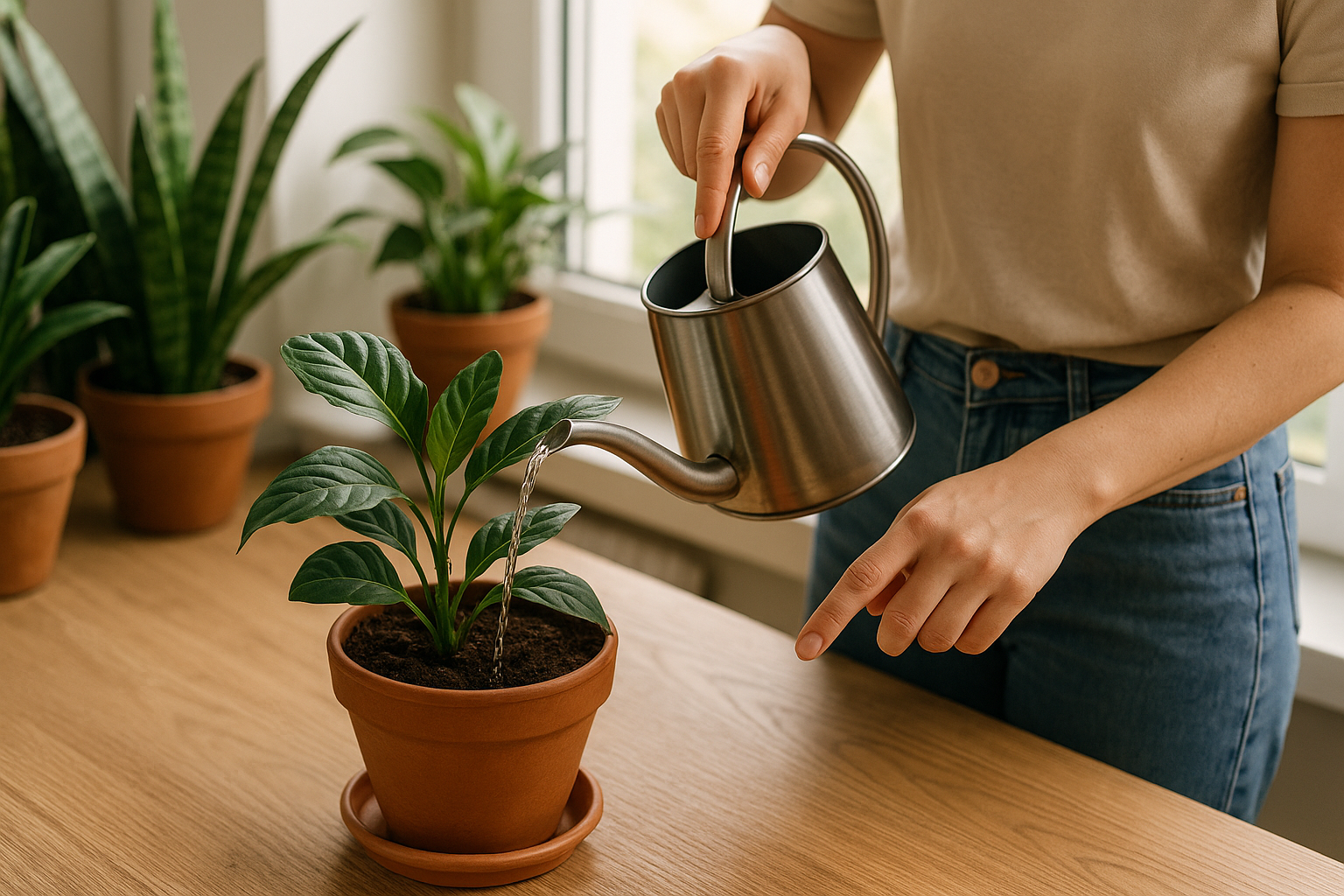Watering seems like the simplest part of plant care, but it’s where most beginners make mistakes. Too much water can drown roots, while too little leaves plants dry and weak. Learning the right watering techniques will keep your plants healthy and thriving without the stress of guessing.
Why Proper Watering Matters
Watering directly affects plant survival. When done correctly, it helps plants:
- Absorb nutrients from the soil.
- Maintain healthy root systems.
- Support photosynthesis and growth.
Poor watering habits are one of the top reasons houseplants die, but the good news is—it’s easy to fix with a little knowledge.
Understand Your Plant’s Needs
Not all plants require the same amount of water. For example:
- Succulents and cacti: Store water in their leaves and need less frequent watering.
- Tropical plants like pothos or peace lilies: Prefer more consistent moisture.
- Flowering plants: Often need more water during blooming.
Tip: Research each plant type to know its specific water preferences.
The Finger Test
Instead of watering on a fixed schedule, check the soil:
- Insert your finger about 1 inch into the soil.
- If it feels dry, it’s time to water.
- If it’s still moist, wait a few more days.
This method works better than guessing or using a calendar.
Always Use Drainage Pots
One of the most important rules is to plant in pots with drainage holes. Without them, excess water accumulates, leading to root rot. Place a saucer underneath to catch water runoff.
Water Deeply, Not Just the Surface
A common mistake is lightly sprinkling the topsoil. Instead, water until liquid starts draining from the bottom of the pot. This ensures roots receive enough hydration.
Adjust for the Seasons
Plants drink differently depending on the time of year:
- Spring and summer: Growth is active, so plants need more water.
- Fall and winter: Growth slows, so water less frequently.
Observe Signs of Overwatering
Overwatered plants often show:
- Yellowing leaves.
- Mushy stems.
- Moldy soil surface.
If you notice these, let the soil dry out before watering again.
Observe Signs of Underwatering
Underwatered plants usually:
- Have dry, crispy leaves.
- Droop or wilt.
- Show soil pulling away from the pot edges.
A thorough watering can revive most underwatered plants.
Use Room-Temperature Water
Extremes in water temperature can shock roots. Always use water at room temperature for consistency.
Water at the Base
Pour water directly onto the soil near the roots, not on the leaves. Wet leaves can invite fungal diseases.
Special Considerations
- Tap water sensitivity: Some plants dislike chemicals in tap water. If possible, use filtered or rainwater.
- Self-watering systems: Great for busy people but still check soil occasionally.
- Grouping plants: Increases humidity and helps maintain moisture balance.
Final Thoughts: Water With Care, Not Routine
Watering plants isn’t about sticking to a strict schedule—it’s about paying attention. By using the finger test, adjusting for seasons, and watching for signs of stress, you’ll master the art of watering.
When you learn to water the right way, your plants will reward you with vibrant growth and a greener, healthier home.

